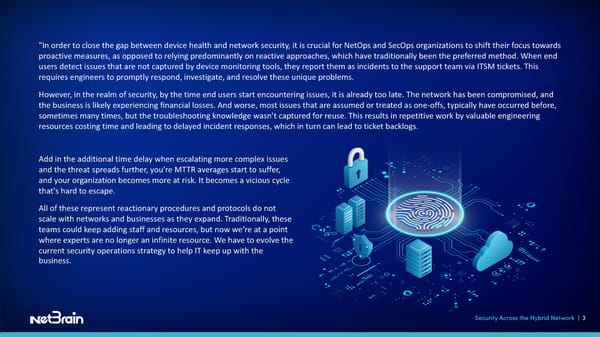"In order to close the gap between device health and network security, it is crucial for NetOps and SecOps organizations to shift their focus towards proactive measures, as opposed to relying predominantly on reactive approaches, which have traditionally been the preferred method. When end users detect issues that are not captured by device monitoring tools, they report them as incidents to the support team via ITSM tickets. This requires engineers to promptly respond, investigate, and resolve these unique problems. However, in the realm of security, by the time end users start encountering issues, it is already too late. The network has been compromised, and the business is likely experiencing financial losses. And worse, most issues that are assumed or treated as one-offs, typically have occurred before, sometimes many times, but the troubleshooting knowledge wasn’t captured for reuse. This results in repetitive work by valuable engineering resources costing time and leading to delayed incident responses, which in turn can lead to ticket backlogs. Add in the additional time delay when escalating more complex issues and the threat spreads further, you're MTTR averages start to suffer, and your organization becomes more at risk. It becomes a vicious cycle that's hard to escape. All of these represent reactionary procedures and protocols do not scale with networks and businesses as they expand. Traditionally, these teams could keep adding staff and resources, but now we’re at a point where experts are no longer an infinite resource. We have to evolve the current security operations strategy to help IT keep up with the business. Security Across the Hybrid Network | 3
 NetBrain Security Across The Hybrid Network eBook Page 3 Page 5
NetBrain Security Across The Hybrid Network eBook Page 3 Page 5